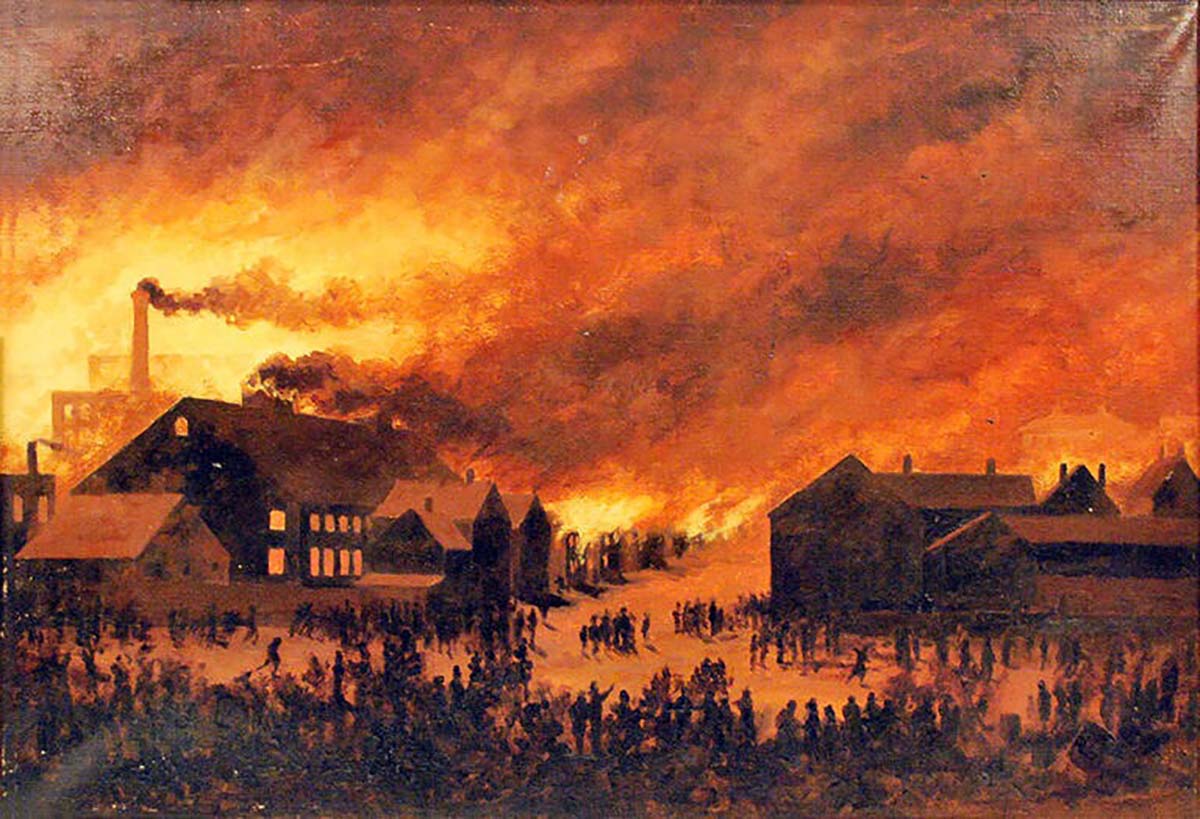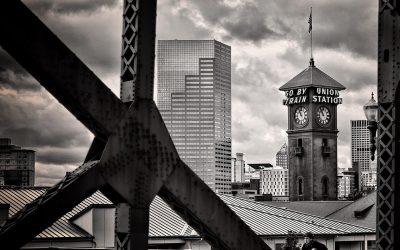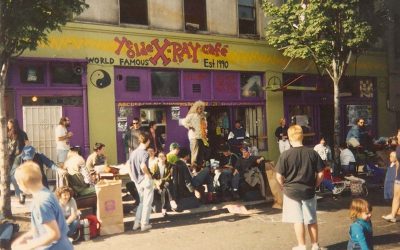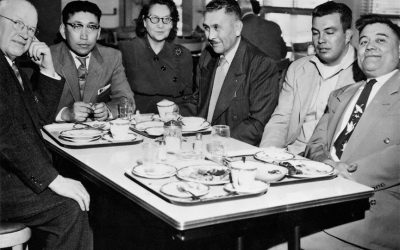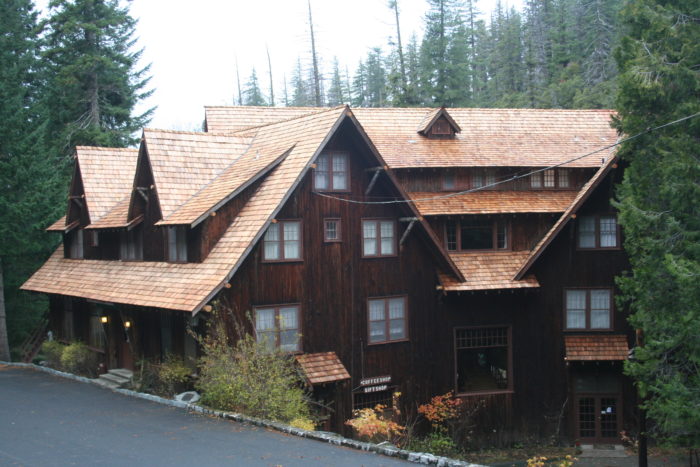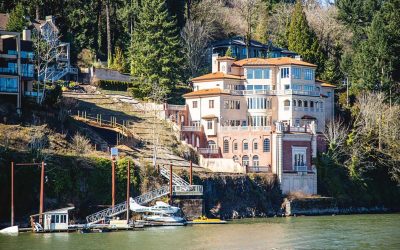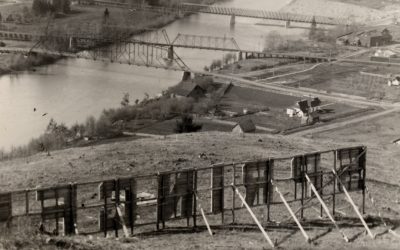In the early morning hours of August 2, 1873, fire bells rang out across Portland as volunteer firefighters scrambled to battle a blaze that, according to newspaper accounts, raged “among the cottages of the poor and the elegant mansions of the rich.” The fire would burn for more than twenty-four hours, leaving behind a trail of destruction that reshaped the city’s future.
The view captured in historic photographs—looking west from Southwest Front Street between Madison and Jefferson—shows the devastation and how narrowly the First Congregational Church escaped the flames. In all, more than twenty city blocks were consumed, including Chinese tenements and supposedly “fireproof” metallic-roofed brick buildings.
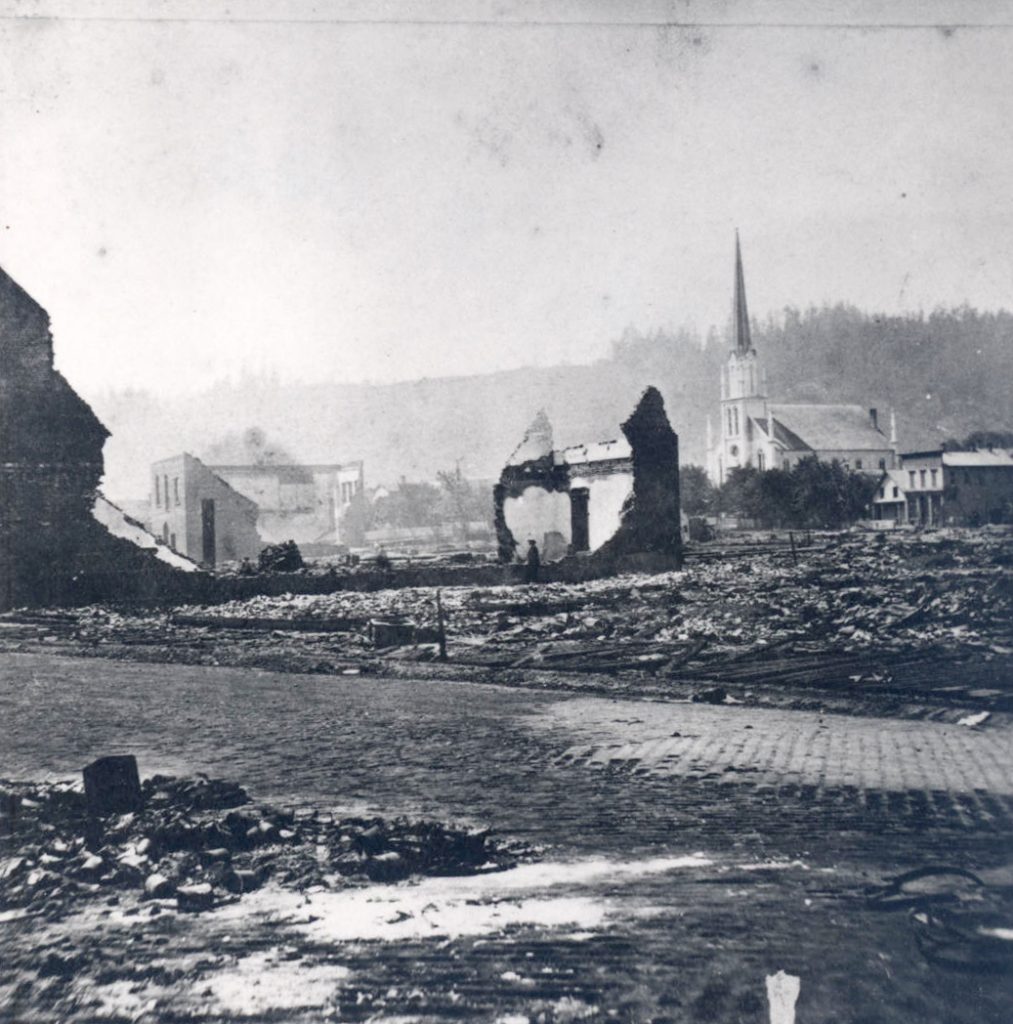
While five Portland fire companies fought the inferno, help also came from beyond the city limits. Firefighters from Salem and Vancouver rushed to Portland, bringing engines and manpower. The Salem crew arrived by train, while Vancouver’s company came aboard the steamer Oneatta. In a rare victory amid the destruction, crews managed to save the St. Charles Hotel, hailed by the Oregonian at the time as “the most magnificent structure on the northwest Pacific coast.”
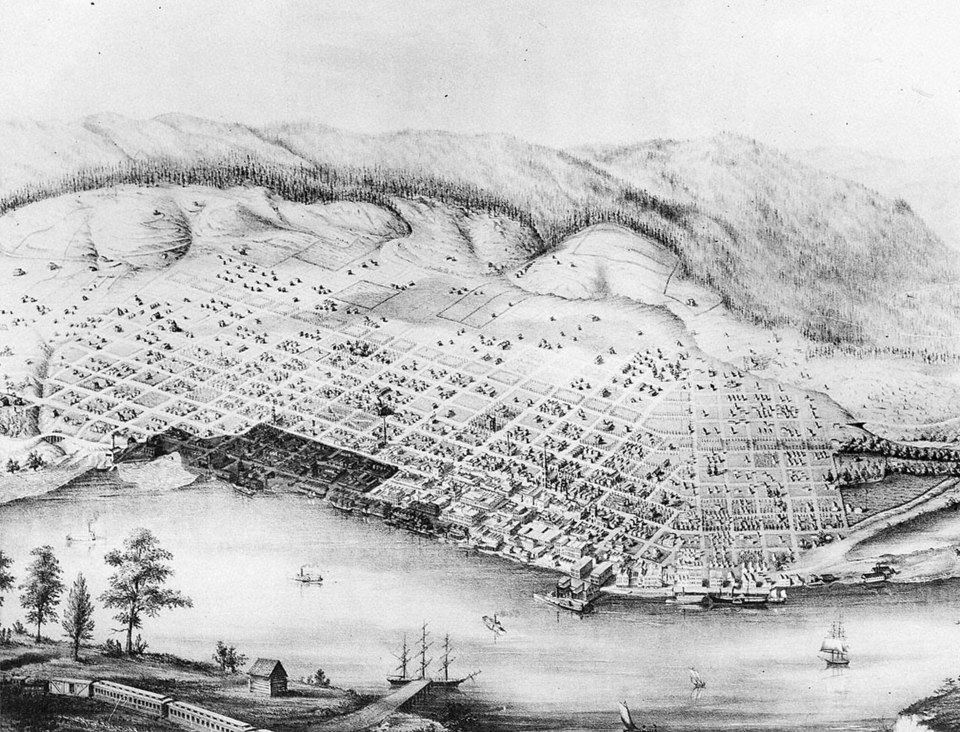
Despite the courage of those who fought the flames, the financial losses were staggering. Damages totaled more than $925,000—a crushing sum for the 19th century. Judge Matthew P. Deady, reflecting on both this fire and a smaller one the year before, lamented that poor leadership and lack of organization hampered firefighting efforts. At the time, each company was still led by its own captain, with no professional fire chief to coordinate a citywide response. The official response after the blaze was almost comically insufficient: Portland simply purchased a louder 4,000-pound fire bell. Proposals to improve the city’s water system—essential for fighting future fires—were blocked by legislators in Salem unwilling to raise taxes or increase debt.
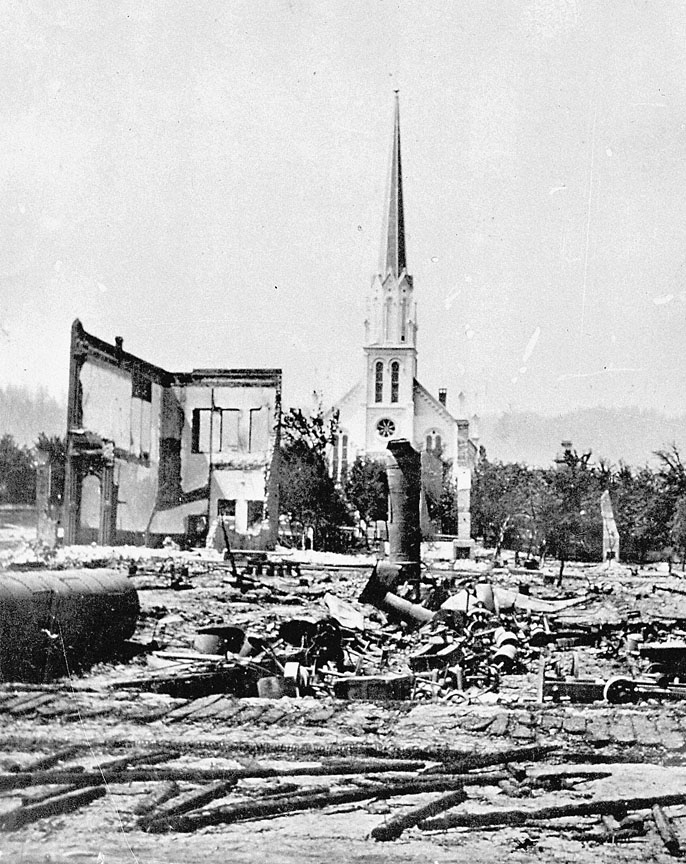
The Great Fire of 1873 exposed the limits of Portland’s early infrastructure and leadership but also revealed the resilience of a community determined to rebuild. From the ashes, the city learned painful lessons that would slowly push it toward modernization in the decades that followed.
📷 The photo above shows the aftermath of the 1873 fire, looking west from Southwest Front Street between Madison and Jefferson. Notice how close the flames came to consuming the First Congregational Church.
Sources: Oregon History Project, Oregon Historical Society. Written by Kathy Tucker, © Oregon Historical Society, 2002.

